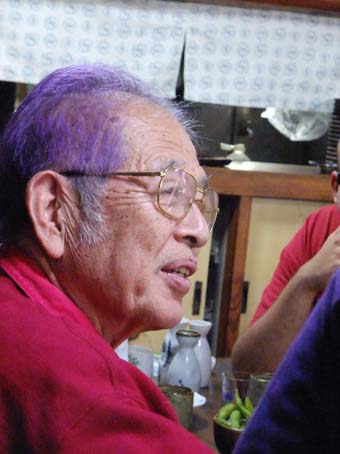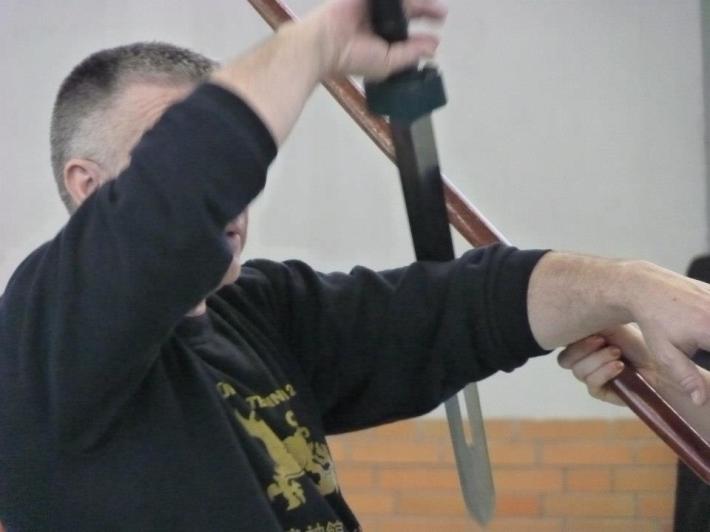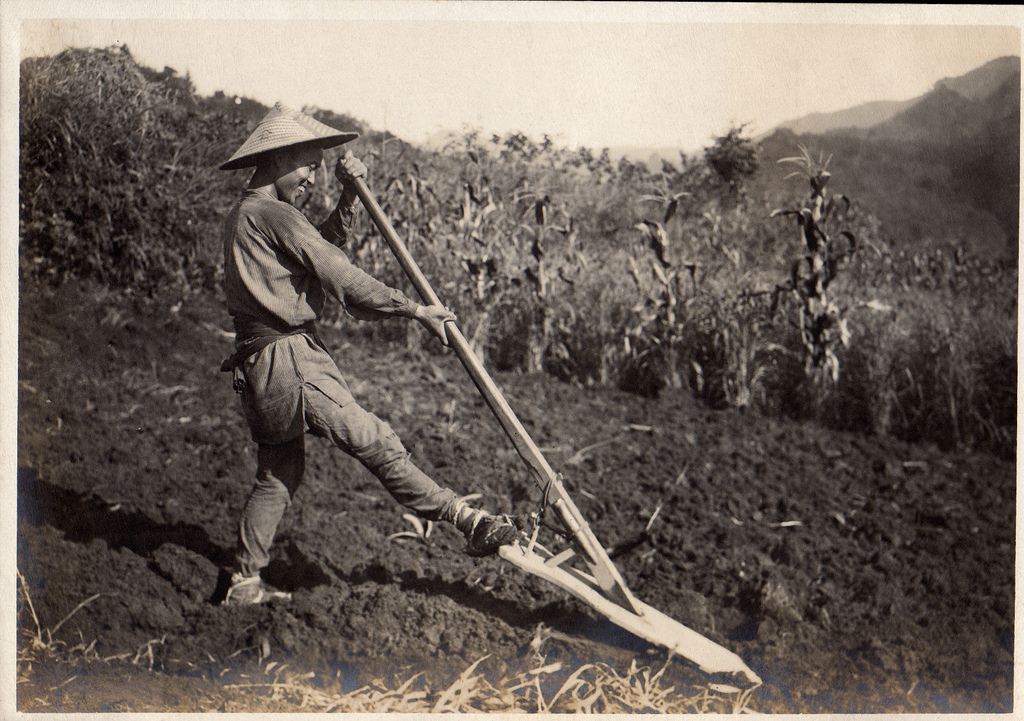Shikomi O-Tanto
From Paart Budo Buki by buki stolar
and this was before back paint, so it could be also natural wood or brown, red etc.
…
From Paart Budo Buki by buki stolar
From Paart Budo Buki by buki stolar
From Shiro Kuma's Weblog by kumablog
 The Bujinkan is growing in quantity but it seems to me that some of its original qualities tend to disappear. And 尊敬心 sonkeishin (respect) seems to be the first one on the list of endangered qualities.
The Bujinkan is growing in quantity but it seems to me that some of its original qualities tend to disappear. And 尊敬心 sonkeishin (respect) seems to be the first one on the list of endangered qualities.
I train Bujinkan because I deeply respect our Sôke Hatsumi Masaaki. The respect I feel for him has nothing to do with the arts he is teaching or showing us but with the man he his. I have been in contact with a few “great men” in my life but none, so far, has been able to mould me and influence me the way he did. I am who I am because I had the privilege to meet Sensei in July 1987 at the first European Taikai organized by Peter.
That was nearly 25 years ago (more than half my age) and through Hatsumi sensei’s permanent teachings (martial and non martial) I was trained to become a true human being.
The Bujinkan Arts mainly develop one feeling and this is intuition. The Sakki test is the pragmatic proof that one has reached this level of intuition.
In Latin, “intuition” is “intuitus” and means the “act of looking at things”. Our Bujinkan training develops our “vision” and we gradually become able to see or “sense” any situation better than many others. The sixth sense is common to all living creature but is rarely accessible to humans. Luckily, the long hours of strenuous training unearth it from within our brain and makes it available to us. Through Hatsumi sensei’s teachings we learn to become more intuitive, i.e. aware of things without apparently thinking. “Don’t think!” as he often say it in class.
Intuition is also 感覚 kankaku in Japanese and means “feeling”. The more we “feel” (through our 5 senses) and the more we develop our sixth sense.
Now funnily, the word 尊敬心 sonkeishin (respect) is somehow linked to the way at which we look at things. But as “kankaku” exists only in the present, “sonkeishin” is linked to the past.
To respect someone is to look at someone’s actions in the past. The Online Etymology Dictionary says it comes “from Latin respectus ”regard,” literally “act of looking back at one,” pp. of respicere ”look back at, regard, consider”.
What someone has achieved in his life is what creates respect. But the Bujinkan growing in quantity I have the intuition that less respect is shown to the elders. Remember that you are who you are because these elders made it possible for you. Look at how Sensei speaks about Takamatsu sensei. This is how you should feel about those who shared with you what you are so proud to have today. Getting a Jûgodan doesn’t free yourself from sonkeishin, on the contrary.
With time some arguments, disagreements, and fights might appear with your elders, but you should never show a lack of sonkeishin to them.
If you do so then 尊敬心 sonkeishin (respect) will turn into 損敬神 sonkeishi (loss of reverence) and the Bujinkan magic will be lost.
Thank you Sensei for your guidance all through these years, and for your help to become an adult.
Respectfully, your student Arnaud
From Shiro Kuma's Weblog by kumablog
 After 5 years (plus one week) you have visited this blog over 250,000 times!
After 5 years (plus one week) you have visited this blog over 250,000 times!
It is a quarter of a million! and represents 50,000 visits per year. This is something we can proud of. Thank you!
During all these years I tried to deliver, through my articles, my feelings about the Bujinkan and all the “secrets” I could get from Hatsumi sensei’s teachings.
I have the chance to go to Japan three times a year I created this blog primarily to help those of you who cannot travel to Noda as often as you would like, so that through these articles you could get a glimpse of what sensei is teaching in his classes.
Even if this is my interpretation, I will continue as I have the feeling that it is helping many Bujinkan members.
This blog is now available in 4 languages and I want to thank here the translators. First of all is my friend Elias who has been doing that for a long time and who is the first one to translate the articles. And also Christophe and Raphael who began to translate them too. Thank you guys I deeply appreciate your help.
Now I have a message for you the reader. Many of your buyû are not able to read English so why don’t you volunteer and translate them into your own language? Send them to me and put them also on your own website. There is nothing to gain here except maybe the pleasure to do something useful for our warrior community.
Contact me if you want to be part of it and help us build a stronger Bujinkan. Remember that information is power.
Thank you again “merci beaucoup” for your endless support.
Arnaud Cousergue
Bujinkan Shihan
From Shiro Kuma's Weblog by kumablog
In the Bujinkan there is the concept of 劒体一条 ken tai ichijô (body and weapon are one).
This concept makes a lot of sense when wielding a heavy sword in 片手 katate (one hand) because the free arm is often in the way. And this is even more difficult to manage as the blade is double edged.
We discovered this same problem when we studied the Tachi. But with the Ken this is even more accurate.
In the Kukishin ryû one of the kotsu is to “keep the elbows/arms close to the body”, this is for the same reason. If you train with the 万力鎖 manriki gusari this is also mandatory.
When I was stationed in Lebanon for the UN, I attended a very interesting Kukri* demonstration by the Nepalese Army. It was impressive and I noticed that the 200 soldiers moving in unisson always kept their free arm off the weapon for themselves and also for their neighbours. I took a video that I might post here one day.
So, as we are discovering the Ken, please keep your free arm as close as possible to the body at all time. Whatever you do with a new weapon has to begin slow. The first achievement is to avoid getting injured by it.
Confidence and ease are the natural results of heavy and long rehearsal. So please train slowly your katate movements, they are very powerful and devastating with such a heavy sword. Your security (and the one of your neighbours) should always be your first concern in training. Don’t be too presomptuous about your own abilities, learn step by step, and keep your free arm to your body.
If you don’t pay attention and don’t learn these movements correctly in slow motion then, instead of 劒体一条 ken tai ichijô, we will do 献体一冗 kentai ichijô, and ”give your useless body to a hospital for medical research”. Interested?
*The khukuri (Nepali: खुकुरी) (alternatively spelled khukri or kukri) is a Nepalese knife with an inwardly curved edge, used as both a tool and as a weapon.For more information check THIS Wikipedia page.
**This is also valid for any object or weapon.
NB: In a previous post I wrote about the weakness of the wooden Taichi sword that can break easily when stopping an attack in the dôjô. Those of you using one, add a layer or two of duct tape and it will increase the security and lower the risks of injury during training. Also it will add a little more weight which is even better.
From Shiro Kuma's Weblog by kumablog
The Ken is heavy and needs a lot of circular momentum to cut into the opponent.
To apply an “omote shutô-like” cut to the side of the neck and to be sure to slide the blade in between the helmet and the yoroi (shoulder level) you must use your taijutsu and the kosshi of the Gyokko ryû.
3 Key points:
Start from an Ichimonji like kamae with the blade lying flat on the arm. From the kamae lift the sword above the head and support it with your extended fingers. Then “lasso” the blade still as flat as as possible above the head with a full body movement using the tenchi (body axis) as a pivoting point. The pivoting action to throw the body is done at the left toe (forward leg). The body weight is transferred gradually from the back leg to the front one (hips still leveled), this slides the body axis forward inducing an acceleration of the blade.
The speed of rotation of the blade added to the body movements creates a devastating power to cut/crush the opponent.
From Shiro Kuma's Weblog by kumablog
 The 四賢の劒 shiken no ken (four virtues of Ken) are the 4 basic rules that I found so far in my research and training with the Chinese Ken.
The 四賢の劒 shiken no ken (four virtues of Ken) are the 4 basic rules that I found so far in my research and training with the Chinese Ken.
After giving two seminars on the Chinese Ken I have made a 私見 shiken (personal opinion), about the way to train and to enrich our budô practice with the help of this fantastic new weapon.
Through thorough 試験 shiken (study and experiment), and exchange with my fellow jûgodan, I came up with the “shiken no ken”, or 4 rules/virtues of the Chinese Ken:
This is G.A.M.A.N:*
1. GRAVITY: Like for the Tachi, I think that a metallic sword is necessary to really understand the major differences in the balance of the blade. The momentum is what creates the 重力 jû ryoku (gravity) feeling. Throw the body by the blade. If you only have a wooden Ken, put some weight at the tip to get this drowning feeling of the head of the blade when moving.
2. AWARENESS: Be careful, train slowly as the momentum of the blade is different from the Japanese sword. This is very true when doing the large (and necessary) horizontal cuts are taking a lot of space. Please check the space around you and avoid hitting the walls or your dôjô friends before doing them. Also, for those training with a wooden sword, be aware that these wooden “taichi” ken on the market are very fragile, they don’t block an attack like a real bokken would; they can break easily and become dangerous for yourself, your partner and your neighbours.
3. MOVEMENT & ARUKI: a straight blade can only create a cutting motion when the movement is circular. Therefore move in a circular manner with your legs and body when doing a technique. Body movement has to recreate the missing curve (反り, sori) of the Chinese blade. Chinese Ken jutsu seems to be at the origin of our particular Aruki of the Bujinkan Taijutsu. Use your legs and get lower even more. Footwork, footwork, footwork!
4. NATURE: Train your regular Taijutsu techniques with the Ken: Ken is in scabbard (held in left hand), Ken is of the scabbard in the right hand: a) scabbard is in left hand and is used as a shield; b) without scabbard, the left hand is free and you can change hand easily.
Be patient, train properly, persevere and if you apply them, I am confident that you will reach the high level of 知見 Chiken: expertise and experience.*
Enjoy!
*我慢 GAMAN means: patience, perseverance, self-control, endurance
**please note this is “Chiken” and NOT “Chicken”… ![]()
From Shiro Kuma's Weblog by kumablog
Since sensei had been giving a training theme per year, I did my best since that time to do my “homework” before going to Japan for my first trip of the year. This year of the snake is not different. This is why I write a lot about the Chinese Ken. I write mainly to force myself to understand. I write to jeep track of what I find. It what find can help anyone then it is even better. Today, I was supposed to teach bô jutsu in Dortmund but Nona and her students “forced” me to give a Ken seminar instead. So I tried to share my discoveries with them and it was nice.
I might be wrong with my findings but the movements we a were doing with the Ken made sense and they worked quite well.
Some asked me how I researched and found these movement of the Ken?
So here after is my modus operandi: First: the Ken being Chinese I read and watched a lot about China’s warring states and the consecutive dynasties. Why? Because History is the origin of the development of specific weapons.
Second: I trained and studied the basic movements possible with a Ken. Why? To understand the balance of the weapon, the limits, and the possibilities.
Third: I established a set of possible kamae (there are no kamae) to start from. Why? Because a movement is the result of an encounter. It is created for a reason and to keep us alive.
Fourth: I satisfied the various possible grips and their possible use. Why? Because each weapon respects its own rules. No wonder that sensei is teaching the Ken only now because I don’t think we would have been able to understand its power if we hadn’t study the major Japanese of the Bujinkan.
Fifth: I studied how to apply the Kukishin and Togakure sets of biken jutsu with the Ken. Why? Because those techniques evolved from the Ken. The Ken created the Tachi, that created the katana. There is a timeline and we have to respect it.
Sixth: I applied basic Taijutsu movements with the Ken mainly Sanshin no Kata and Kihon Happô. Why? Because it is always easier to learn a new logic when everything else is already known.*
Seven: I “invented” sets of movements, looking very Chinese, to free the body from the weapon. Why? Repeating sets of movements is the best way for the body to discover its new balance and correct its mistakes. This type of study is always done slowly to give a chance to the body to adjust itself with the brain.
Do your homework; follow these steps if you wish, and you will be ready and get the best out of your next trip to Japan.
* sensei said recently that the Sanshin no Kata was designed at the origin for the Chinese Ken.
From Bujinkan Santa Monica by Michael
 |
| Japanese Plow (notice grip), 1914-18 photo by A.Davey |
From Bujinkan Santa Monica by Michael
 |
| Japanese Plow (notice grip), 1914-18 photo by A.Davey |